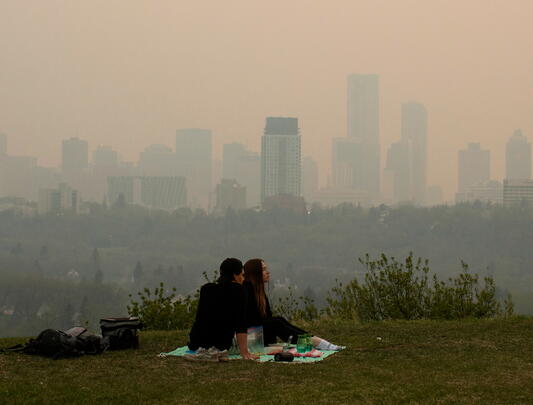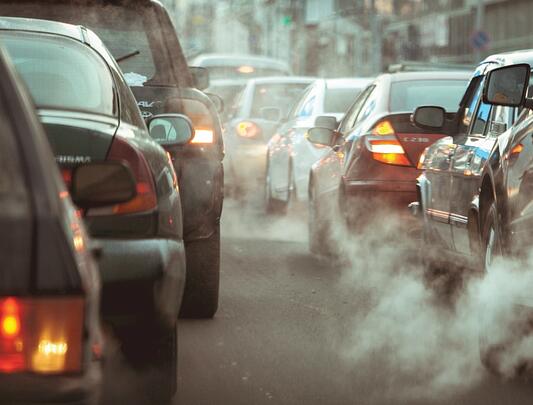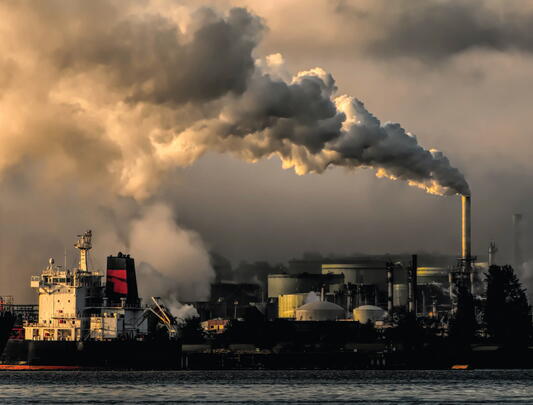Is it safe to exercise amid extreme heat and smoky skies?
Dr. Michael Koehle, a sport and exercise medicine professor, discusses how to tell if it’s safe to exercise outside and what to do when conditions become extreme.
For many people, summer is an opportunity to bring their exercise routine out of the gym and into the great outdoors.
But as heat waves, wildfires, and smoke-choked skies become commonplace for more communities, it’s important to safely adjust your outdoor exercise to the new realities of climate change.
Dr. Michael Koehle (PhD'06), a professor of sport and exercise medicine at the UBC Faculty of Medicine, discusses how to tell if it’s safe to exercise outside and what to do when conditions become extreme.
What are the health risks of exercising in extreme heat or forest fire smoke?
Exercising in hot conditions can put us at risk of exertional heat illnesses, including heat exhaustion at the mild end of the spectrum, or the more severe variant, heatstroke, which can be life-threatening.
By contrast, living in areas affected by wildfire smoke — whether we’re resting or exercising — exposes us to long periods of very high levels of particulate matter in the air. This can lead to long-term consequences such as heart and lung disease, as well as diabetes and dementia. The harmful effects of air pollution may be compounded during exercise, because the rate and depth of our breathing increases.
Some people are more at risk than others, and this includes older adults, pregnant people, young children, and people with pre-existing health concerns like lung or heart conditions, cancer, diabetes, and mental illness.
How do you know if it’s safe to exercise outdoors?
In Canada, we have helpful tools that give us an indication of the environmental conditions outdoors. For temperature, it’s important to consider the humidex, since we have more difficulty managing our body temperature on hot days that are also humid. People will experience discomfort with a humidex above 30 and should be particularly careful with a humidex above 40.
For air pollution, in Canada we use a scale called the Air Quality Health Index (AQHI), which gives an estimate of the air quality health risk on a one-to-10 scale, and can be checked on apps like Plume Labs and AQHI Canada. Environment Canada has reasonable guidance on when it is safe to exercise, but generally speaking, people should consider modifying outdoor activities when the AQHI is above four for at-risk populations, seven for the general population, or if you experience symptoms such as coughing or throat irritation.
What precautions can people take to stay safe when exercising outdoors in these conditions?
The most important strategy is to monitor current conditions and forecasts for both weather and air quality. This allows us to choose the better times of day and locations for physical activity and exercise. Often early morning can be lower-risk for both heat and smoke, and locations like parks that benefit from optimal wind, shade, and distance from smoke sources can lead to lower heat and air quality risk.
For more detailed guidance, the Canadian Academy of Sport and Exercise Medicine has helpful recommendations on exercising in air pollution. The Government of Canada also has information and advice for heat and humidity.
Why is it important to continue exercising, even during environmental extremes?
We know that in the long term, a physically active lifestyle is important in preventing and treating many chronic diseases, including those that make people more susceptible to the effects of extreme heat and smoke, so avoiding activity altogether is not a solution.
Instead, using strategies like exercising in the early morning or indoors depending on the weather conditions, can help us to stay active, even when the AQHI or humidex are particularly high.
Although we can acclimate somewhat to high heat and humidity over a period of days to weeks, there is no indication that we can acclimate to the air pollution that comes from wildfires. So repeated exposure to wildfire smoke — during rest and exercise — only leads to increased risk of long-term health consequences. Everyone needs to assess the conditions and adapt our activities accordingly.



























